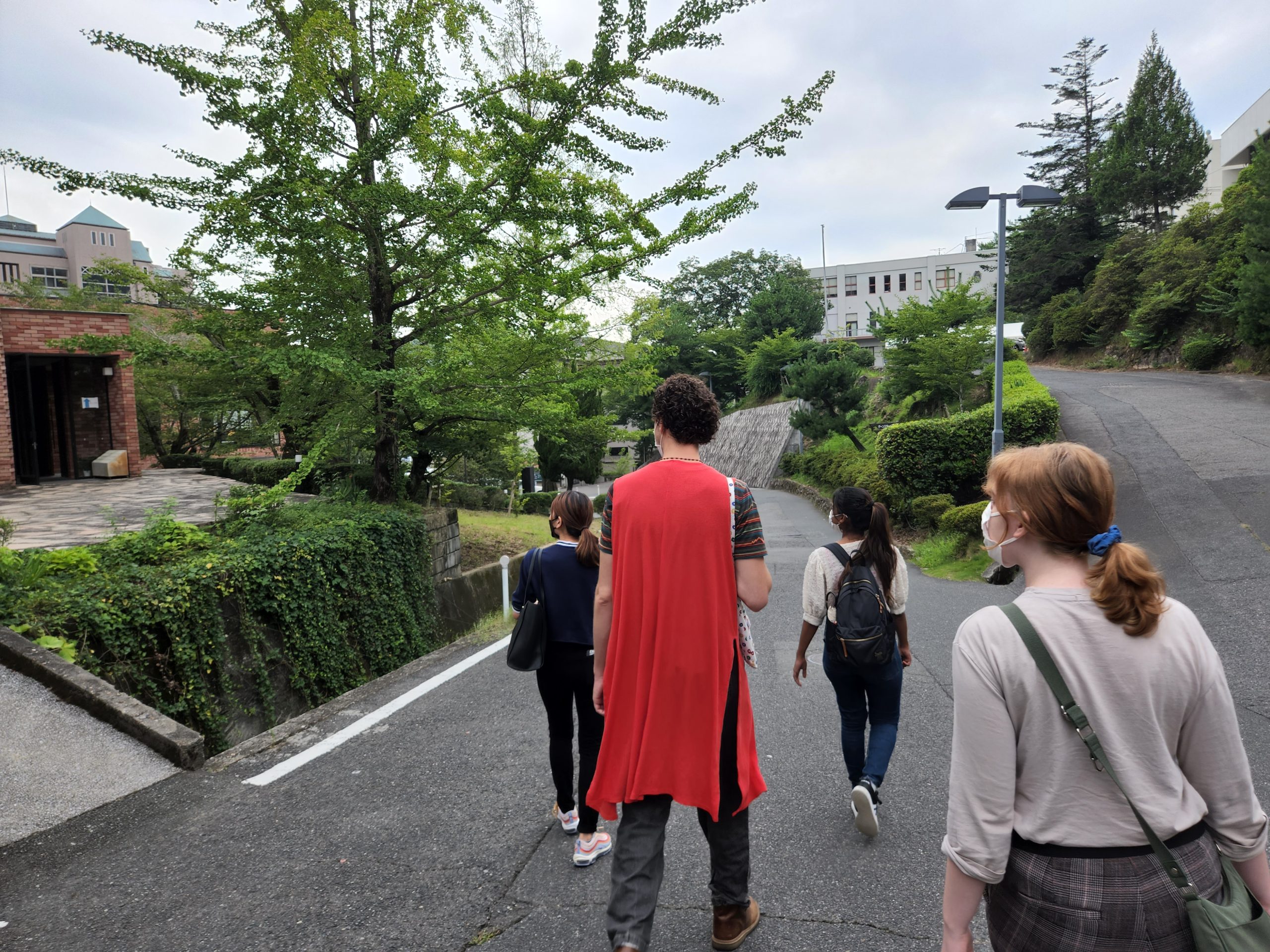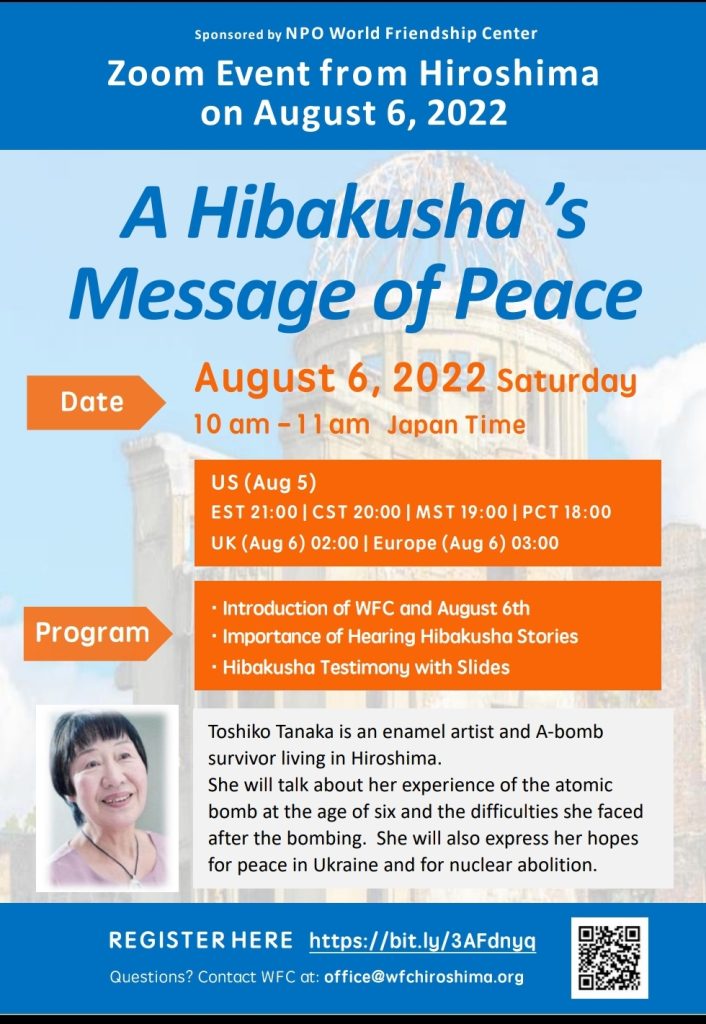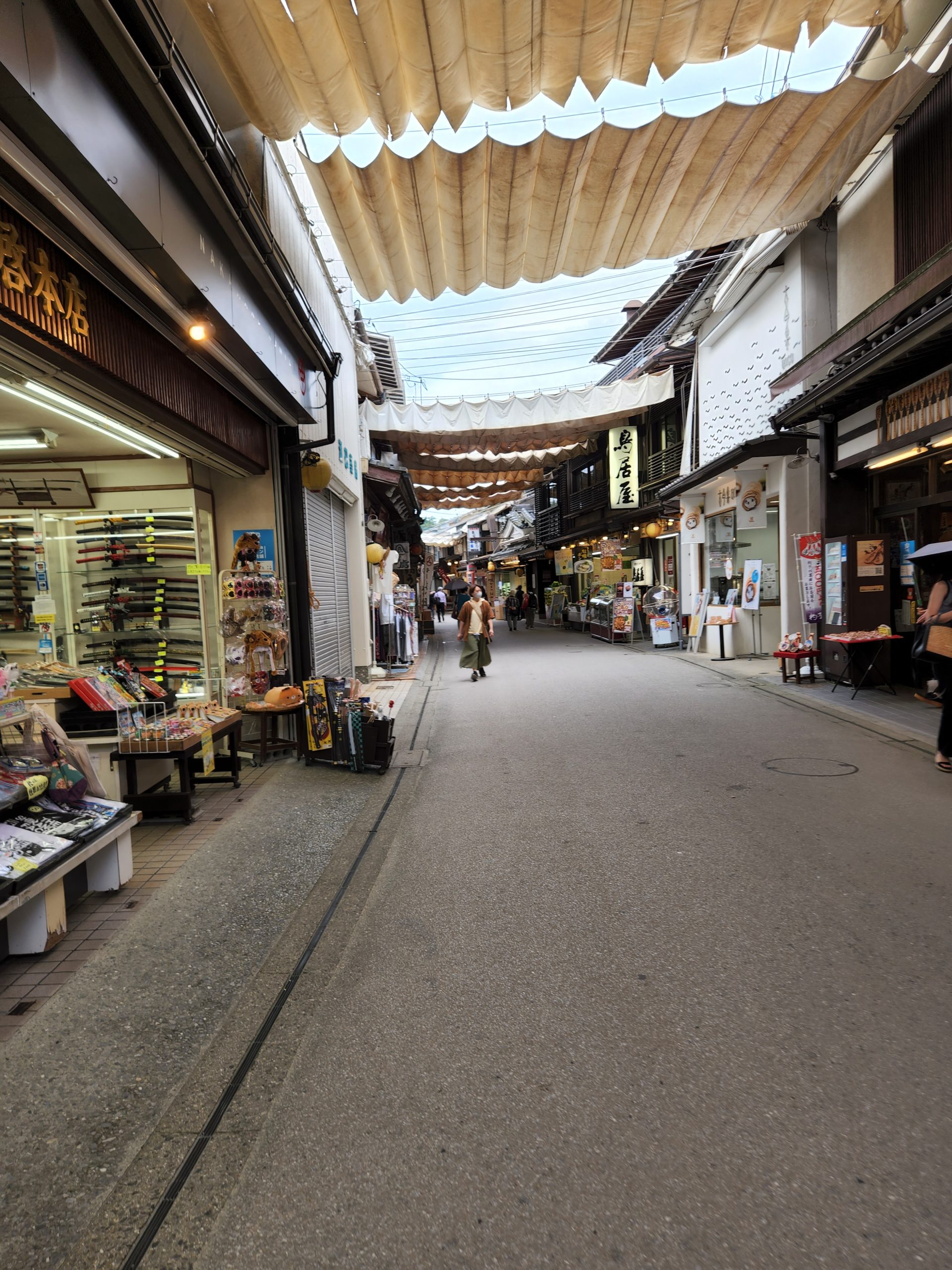My fourth week has been full of learning, empathy, and kindness. On Saturday and Sunday, I took a personal trip to Tokyo, so I might make a separate tab on the blog to talk about that. However, if I decide not to just know that it was super fun and that there are NO BENCHES IN TOKYO (basically), so if you go be sure to plan everything ahead of time otherwise your feet might fall off while you wander aimlessly 🙃. Anyway, check out the highlights below!!
July 24th – Fun Day with Laura
At 5pm, Laura and I went to a Cat Café. This was on my list of must-have experiences while I’m in Japan so I was very excited. We didn’t end up getting any drinks, but we did play with the cats. When I bought some treats to give them we were swarmed immediately 😂.
After that, we had dinner at a restaurant called Otoya and I ate broiled mackerel and miso soup with rice 😋. Later we walked around Hondori a bit and ate some taiyaki, a fish-shaped cake. My taiyaki had premium pudding and it was sooo good. Overall it was just a fun time.

July 25th – Yoko’s House
At 11am, Yoko Mimura, a WFC Chair, invited Laura and me to her home to show us her kimonos and try calligraphy. She lives outside the city, so I was able to see a different side of Hiroshima which was very nice. Yoko began by showing us a photo album that held pictures of the kimonos. Her family has had these kimonos for many years, so the most beautiful ones have been passed down to be used in coming-of-age ceremonies and marriages. Yoko showed us the pictures of her daughter’s wedding. After showing us the pictures, she brought out the kimonos for us to see and touch. “Intricate” was the primary word swimming around in my mind while viewing the kimonos. From the elegant packaging to the specific way of folding the kimono. Yoko’s kimonos were full of patterns and colors that one would never see in western clothes, and every piece was a completely different style from the last. I was constantly amazed by the great intention put into their creation, and the cultural significance interwoven with every thread. Kimonos are very deserving of their title as Japan’s traditional clothing as if there was ever any doubt. Yoko was also so kind as to allow us to try on her kimonos, Laura tried on her daughter’s wedding kimono and I tried on a male yukata she was given by her mother-in-law and never opened. After seeing that yukata was a perfect fit for me, Yoko very graciously gifted it to me 😱. I will cherish it always ☺️❤️.
Sometime later, we practiced calligraphy by writing our names in Kanji. It was very difficult, but we did our best 😂.

July 26th – Kasaoka-san’s Testimony and Peace Dolls
At 9:30am, we listened to Kasaoka-san’s, a hibakusha, testimony about what occurred in her life on August 6th, 1945 when the A-Bomb was dropped on Hiroshima. Trigger Warning for Graphic Descriptions: Kasaoka-san was one of many mobilized middle school students whose job was to demolish houses to create fire-breaks to limit the expansion of fire if Hiroshima was firebombed by B-29s. However, on August 6th she was not present because she had a stomach ache and stayed home. Staying home saved her life as she would have been in the heart of the city otherwise and been horribly burned. Kasaoka-san recalls seeing a bright light like the sunset before quickly ducking because she knew something was wrong. Then her window burst open and she was impaled with glass on her head. Luckily the wound was not deep. She immediately grabbed her grandmother and went to the neighborhood evacuation site near the hillside. During this time she saw the distinctive mushroom-shaped cloud of the A-Bomb. After some minutes she saw very badly wounded people enter the evacuation site and knew that her father and mother who had been working in the city were in trouble. However, she could not leave her grandmother, so did not get up to find them. In minutes a neighborhood soldier (I believe) brought her father to the site on a stretcher. His entire body was burnt black, his lips were turned inside out, and his eyes stared straight ahead because he could not close them. Kasaoka-san could not recognize her father until he spoke. He asked for water, but she did not give him any because everyone was told at this time that giving a badly burned person water would kill them. She lied to her father that they had none, and not giving him water at this moment is her biggest regret to this day. Trying to treat her father’s wounds until help could arrive was all for not because his skin would fall off completely anytime it was touched. Flies soon surrounded his body due to the smell of his untreated infected wounds. The flies laid eggs and he soon had maggots inside his body. Kasoaka-san tried her best to fan the maggots off him and help her dad, but there was only so much she could do. Seeing that he would die soon she figured she could at least make him happy and brought him some sake because he enjoyed drinking. Unfortunately, his mouth was too badly burned and he could not swallow. The next day he passed.
This part of Kasaoka-san’s testimony impacted me the strongest, due to how much pain her father must have endured and her own upsetting lack of power. There was nothing she could do to help one of the people she loved the most in the entire world. This reality disturbed me at my core.
At noon, some WFC board members, Laura, and I gathered in the living room to create Peace Dolls. Peace Dolls were created by a WFC member back in the 70s after being asked by Barbara Reynolds, the WFC founder, to help her send a message to the world.


July 27th – Tree Tour with Katsumi
At 1:30pm, Laura and I rode our bikes to the A-Bomb Dome to meet up with Katsumi Takahashi, a WFC Vice Chair, so that he could give us a tour of some of the A-Bombed trees that survived. The tour was very interesting and we learned about the history of Hiroshima before and after the A-Bomb. For example, the second largest A-Bombed tree is near many apartment buildings that were specifically made for the hibakusha in the 70s so the government could demolish the ghettos that hibakusha created for themselves after being dispossessed, and losing the ability to gain financial security because of health problems and discrimination.

July 28th – Kajiya-san’s Testimony and Peace Park Tour
At 10:30am, we listened to Kajiya-san’s testimony of what occurred in his life on August 6th, 1945 when the A-Bomb was dropped on Hiroshima. Trigger Warning for Graphic Descriptions: Kajiya-san was about six years old when the A-Bomb was detonated. He was cleaning the floors of his elementary school classroom with his fellow classmates. He went outside for a moment to retrieve more soap and water then walked back in and continued cleaning. It was in this half-second that he saw a bright flashing light and heard a “Pika” then “Don”. He crouched down, as all school children had been taught to do during wartime, and the school building collapsed around him. He found himself in a dark pocket with one light of the sky shining above him. He mustered all his strength and courage and dug his way out of the wreckage. When he made it to the surface he saw many horribly injured people completely covered in ash, with burns so bad that their skin was falling off. Everyone was walking in a procession and he decided to follow. He could see fire in the distance. Looking back, Kajiya-san says that he is extremely proud of himself at that time. If he had given into fear or lost heart he would have surely been burned alive under the collapsed school. When he reached the river, he saw many people seeking relief from their burns in the river. Many of them fell into the water and with no strength to get back out they drowned. He saw what seemed like an endless sea of bodies. He eventually found his way to an evacuation site in the hills with many injured people he did not know, he has no memory of what happened up there. Soon after, he was discovered by a friend of his family who led him down the hill to his mother. On the way, many people reached out to him, begging for water, although he was only a child. His mother was embedded with many shards of glasses and could only use one of her eyes, yet still, she held him. As did his father, who was not too badly injured. Behind his parents lay his older sister, who was in the same school house as him, dead having been crushed by a beam. When Kajiya-san looked all around him, at the severely injured and dead people and the fire that consumed the city in the distance, all he could think was that he was in hell.
At 1:30pm, Yoko and Miho, the WFC financial officer, took Laura and me on a guided tour of the Peace Park. It was a very good tour that added so much more background to the monuments than the plaques ever could. Please if you ever visit Hiroshima one day, take a guided tour of the Peace Park with WFC. It’s worth it!


July 29th – Tamiyuki-san’s Testimony and Finished Item Labels
At 9am, we listened to Tamiyuki-san’s testimony of what occurred in his life on August 6th, 1945 when the A-Bomb was dropped on Hiroshima. His story is a little different in that he was not in Hiroshima City at all when the bomb was dropped. Being three years old, he was evacuated to his uncle’s house two towns over. Tamiyuki-san told the story of his father who was only 500 meters from the hypocenter and only one of two survivors from the bank he worked at. Tamiyuki-san also told the story of how he grew up not knowing of the events that led his father to escape on foot from the hypocenter and collapse in his uncle’s house two days later. He learned of the events only after his father’s death when he was in his early 30s due to his brother finding a newspaper where his father described his experience. Years later when Tamiyuki entered retirement he decided to dedicate his life to advocating for the abolishment of nuclear weapons everywhere and telling his father’s story. In the newspaper, his father mentioned four tips he learned that helped him survive.
- Don’t argue about trifle things
- Don’t panic when you face a disaster
- You should accept the advice of others
- Carefully prepare for anything that might happen
At 12:30pm, I finally finished my item label project. Many unforeseen problems arose, so I was unable to put them on the nice paper I wanted to. However, it’s a good start that leaves room for improvement in the future. I’m glad I was able to assist the World Friendship Center.


Fourth Week Conclusion
In conclusion, my fourth week was very educational. I am so grateful and lucky to have heard so many hibakusha testimonies in such an intimate way. It is now my responsibility to tell their stories to as many people as I can and share the great wish in their hearts for another atomic bomb to NEVER be dropped on the world again. Nuclear weapons should be abolished, and war hurts EVERYONE. I ask that you lead with your heart and aspire toward harmony as best you can. Talk to you again soon!!

















